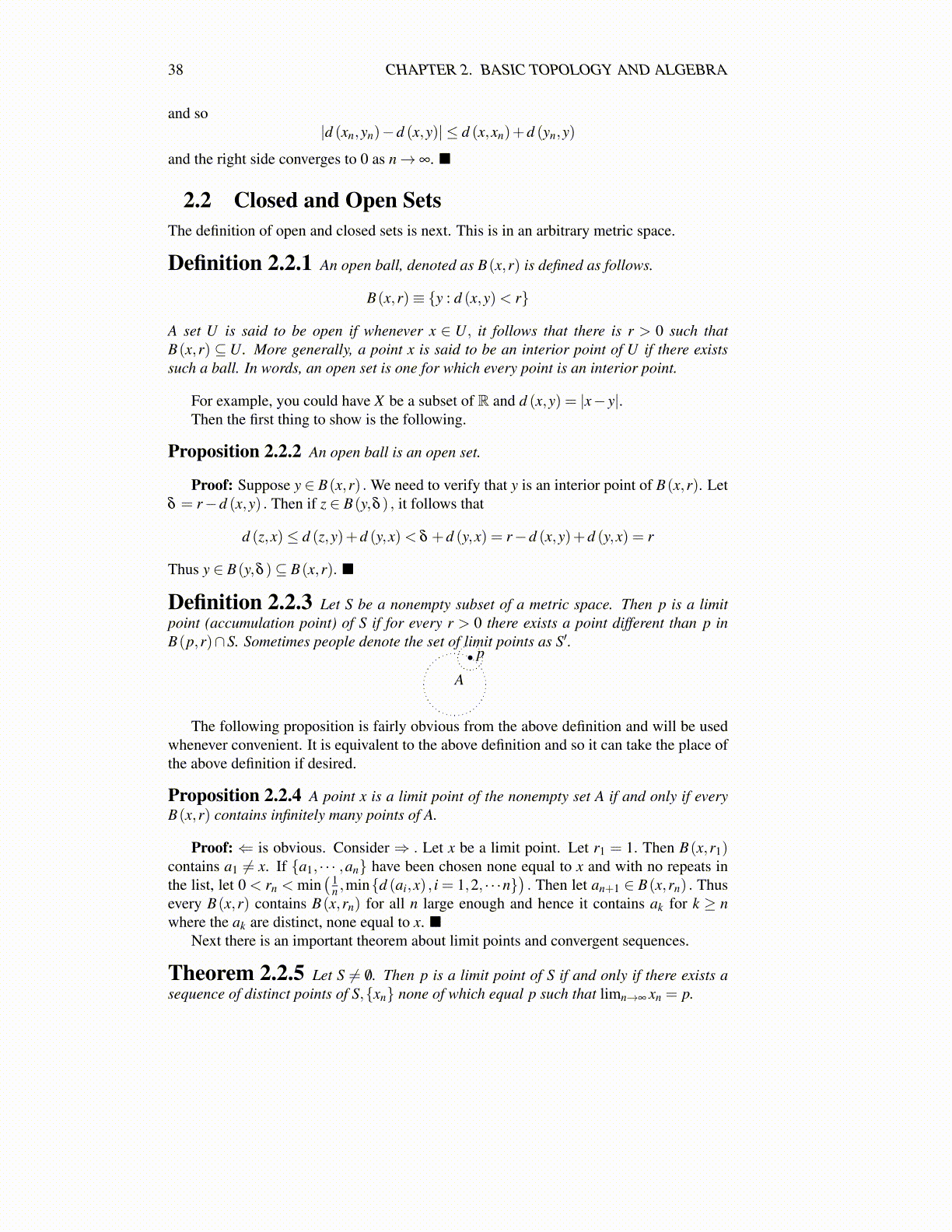
38 CHAPTER 2. BASIC TOPOLOGY AND ALGEBRA
and so|d (xn,yn)−d (x,y)| ≤ d (x,xn)+d (yn,y)
and the right side converges to 0 as n→ ∞. ■
2.2 Closed and Open SetsThe definition of open and closed sets is next. This is in an arbitrary metric space.
Definition 2.2.1 An open ball, denoted as B(x,r) is defined as follows.
B(x,r)≡ {y : d (x,y)< r}
A set U is said to be open if whenever x ∈ U, it follows that there is r > 0 such thatB(x,r) ⊆U. More generally, a point x is said to be an interior point of U if there existssuch a ball. In words, an open set is one for which every point is an interior point.
For example, you could have X be a subset of R and d (x,y) = |x− y|.Then the first thing to show is the following.
Proposition 2.2.2 An open ball is an open set.
Proof: Suppose y ∈ B(x,r) . We need to verify that y is an interior point of B(x,r). Letδ = r−d (x,y) . Then if z ∈ B(y,δ ) , it follows that
d (z,x)≤ d (z,y)+d (y,x)< δ +d (y,x) = r−d (x,y)+d (y,x) = r
Thus y ∈ B(y,δ )⊆ B(x,r). ■
Definition 2.2.3 Let S be a nonempty subset of a metric space. Then p is a limitpoint (accumulation point) of S if for every r > 0 there exists a point different than p inB(p,r)∩S. Sometimes people denote the set of limit points as S′.
A
p
The following proposition is fairly obvious from the above definition and will be usedwhenever convenient. It is equivalent to the above definition and so it can take the place ofthe above definition if desired.
Proposition 2.2.4 A point x is a limit point of the nonempty set A if and only if everyB(x,r) contains infinitely many points of A.
Proof: ⇐ is obvious. Consider ⇒ . Let x be a limit point. Let r1 = 1. Then B(x,r1)contains a1 ̸= x. If {a1, · · · ,an} have been chosen none equal to x and with no repeats inthe list, let 0 < rn < min
( 1n ,min{d (ai,x) , i = 1,2, · · ·n}
). Then let an+1 ∈ B(x,rn) . Thus
every B(x,r) contains B(x,rn) for all n large enough and hence it contains ak for k ≥ nwhere the ak are distinct, none equal to x. ■
Next there is an important theorem about limit points and convergent sequences.
Theorem 2.2.5 Let S ̸= /0. Then p is a limit point of S if and only if there exists asequence of distinct points of S,{xn} none of which equal p such that limn→∞ xn = p.